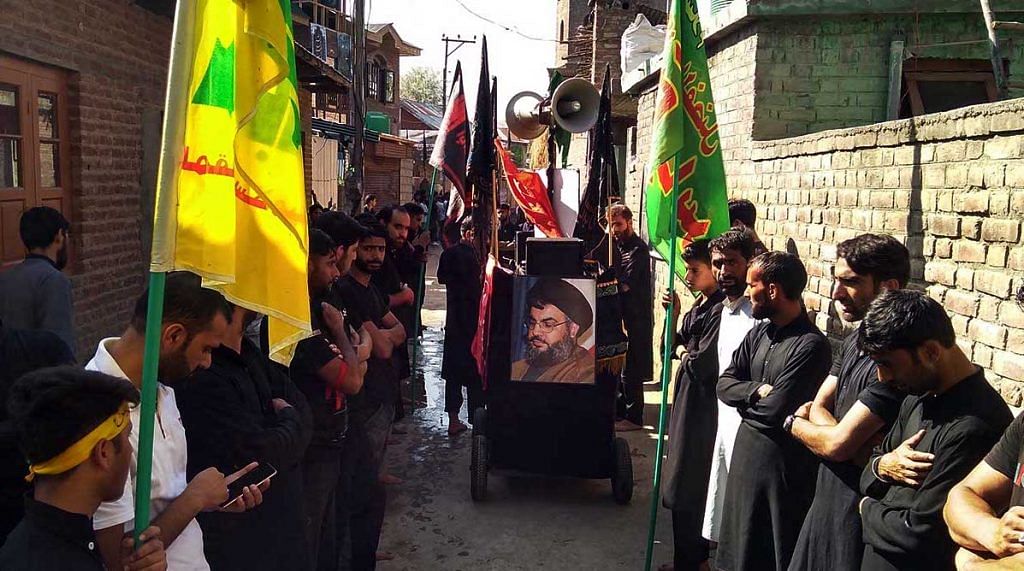There is a new ‘inspired’ narrative being built around the Shia community in Kashmir, especially after the abrogation of Article 370, as though they are supportive of New Delhi’s action. A recent article by Abhijit Iyer-Mitra says that the “Shias of Kashmir live in a state of relief and caution: relief at Article 370 being lifted, and caution that things won’t get any better for them”.
He writes about “cooperative stone-pelting” alluding to a tacit understanding between the Shias and the security establishment. A CRPF told Mitra: “They tell us the time they will come out to pelt so it never gets serious. ”
Nothing could be more untrue.
This mythology of cooperation doesn’t quite explain how scores of Shia mourners were injured when many Muharram processions turned violent on 6, 7 and 10 of September. The security forces teargassed the Shia procession and shot pellet guns. Is this “cooperation”?
Also read: After scrapping of Article 370, Shias in Kashmir are in a state of relief and caution
Muharram processions
To understand the Shia narrative about the scrapping of Article 370 and the overall Kashmir conflict, let’s take a closer look at the community. A common sight in almost all the Shia Muslim localities of Kashmir include these signs and images:
“Kullu yawmin ʿAshuraʾ wa kullu arzin Karbala (Every day is Ashura and every land is Karbala)”, portraits of Iranian supreme leader Ali Hosseini Khamenei, Ruhollah Khomeini, former Iranian president Ahmadinejad and Hassan Nasrallah, the founder of Lebanese Hezbollah with an AK-47.
There are more Iranian symbols than Indian or Pakistani in Shia localities. After the scrapping of Article 370 on 5 August, Shias put up more and more such banners, portraits, flags on houses, mosques, Imambaras, walls.
The commemoration of the 7th-century battle of Karbala in which Prophet Mohammad’s grandson Imam Hussain was killed along with his 72 kith and kin is a deeply ingrained event among Shia Muslims. However, Muharram processions were banned in the Valley after armed rebellion erupted in Kashmir in 1989. Since then, the Shia community takes out processions in government-designated routes in Srinagar, within the limits of certain localities. But after 5 August, most of the Muharram processions were not allowed.
“These processions is the manifestation of our resilience against cruelty,” a senior Shia preacher told me.
Hussain, a journalist from Budgam, said the government imposed a curfew on 9 September and sealed all the entries and exits of the town. “The resilience that we learned from Karbala made us leave our houses and commemorate the martyrdom of Imam Hussain,” he said.
Also read: Kashmir photojournalist hit with pellets, 3 others hurt while covering Muharram procession
Alienation
The Shias of Kashmir are not welcoming the Article 370 move either.
“If the Centre wanted to take any decisions in Kashmir’s favour, then why won’t they take us onboard for the decision? How can we trust any decision based on lies and treachery? It’s the same as Karbala in Kashmir,” a 40-year-old businessman, Parvaiz Ahmad, from Zadibal told me.
In Sufipora, people mostly work in the tourism industry. They work as porters, in hotels and restaurants in the nearby Pahalgam hill station.
“Before 5 August, we were fighting against elite families of Kashmir [the hoteliers] who have taken the forest land illegally and are making thousands of rupees out of it. Now we will have even stronger people establishing businesses and eroding our ecosystem,” Zulfqar Sheikh, a college student in Sufipora, said. The government’s move now allows others to buy land in Kashmir.
A senior Shia preacher from Pulwama told me that people have voted for different political parties earlier but any political activity has “ended in smoke” after 5 August. “No one can shoulder the mess the BJP has created in Kashmir.”
“This move has further alienated a common Kashmiri irrespective of their religion and sect,” a university student from Pulwama said.
Jinnah to Netanyahu
Kashmiri Shias are considered to be supporters of Pakistan because of Mohammad Ali Jinnah’s Ismaeli Shia roots. He is still revered among Shias of Kashmir. According to some, Shia Muslims had supported the “other side” during the 1947-48 and 1965 raids by Pakistan.
However, after Zia-ul-Haq led Pakistan groomed and protected anti-shia factions, the Shias of Kashmir started developing a soft corner for India. Saudi and US support for Zia’s regime against the Soviets in Afghanistan, consistent attacks on Shias in Pakistan made them anxious.
At the same time, the 1979 Iranian revolution and the Indian recognition of the new regime also garnered India some support from the Shias. Now, India’s close ties to Israel (remember Benjamin Netanyahu and Modi’s hugs) and US sanctions on oil from Iran has again changed the dynamics in Kashmir. The new India-Israel relationship hasn’t made the Shias feel very fond of India, or made them do “cooperative stone pelting”.
Also read: Modi has convinced the world Kashmir is India’s internal affair – but they’re still watching
BJP’s targets in Kashmir
Interestingly, the BJP tried to make inroads into the Shia Muslim vote bank, before and after the party broke away from the PDP coalition government last year.
Ram Madhav even tried to lure Shia voters in Kashmir by making promises like minority status to Shias, job reservations, demarcating a constituency, lifting ban on Muharram processions, a separate Shia Waqf Board and exclusive Hajj quota for the community. But it didn’t work.
As of now, all the three major leaders of Shias – Imran Raza Ansari (mainstream), Abbas Ansari (separatist) and Agha Syed Hassan (separatist) – are under house arrest.
So, don’t try and use Shias to polarise readers about what is really happening in Kashmir.
